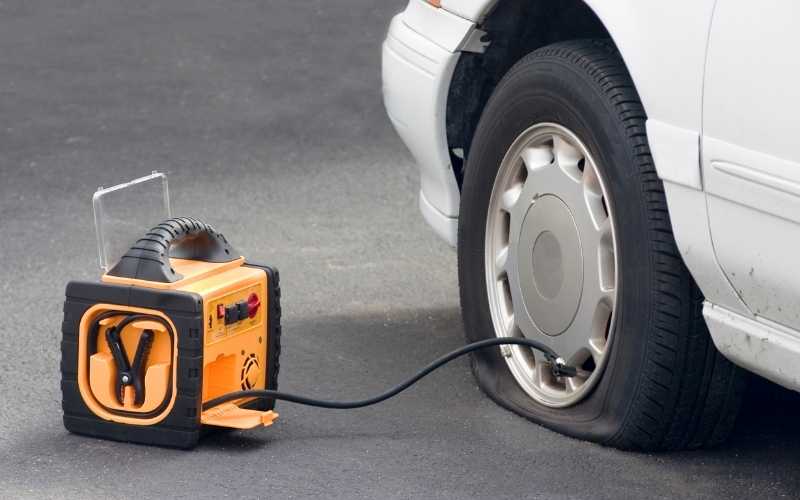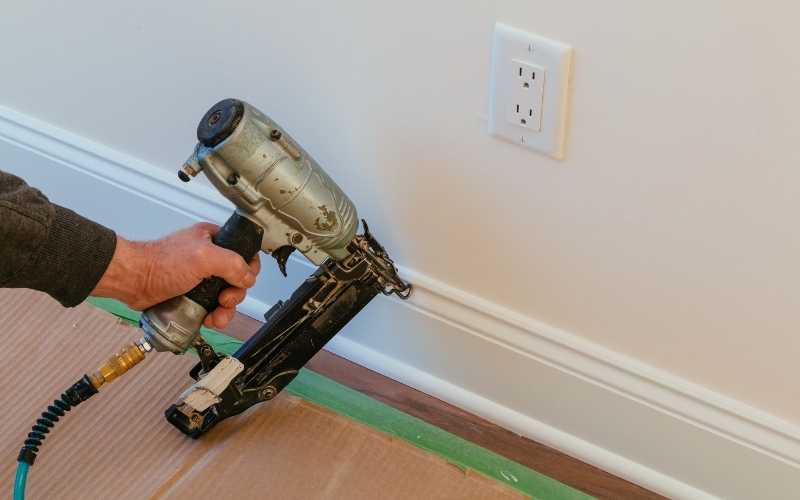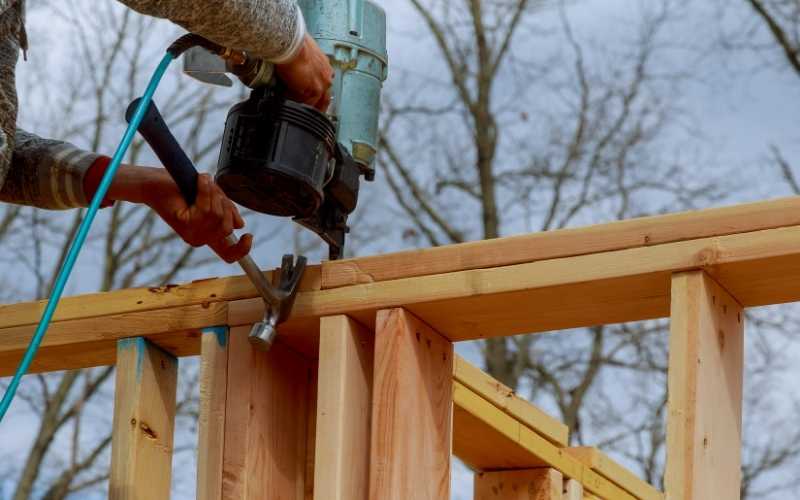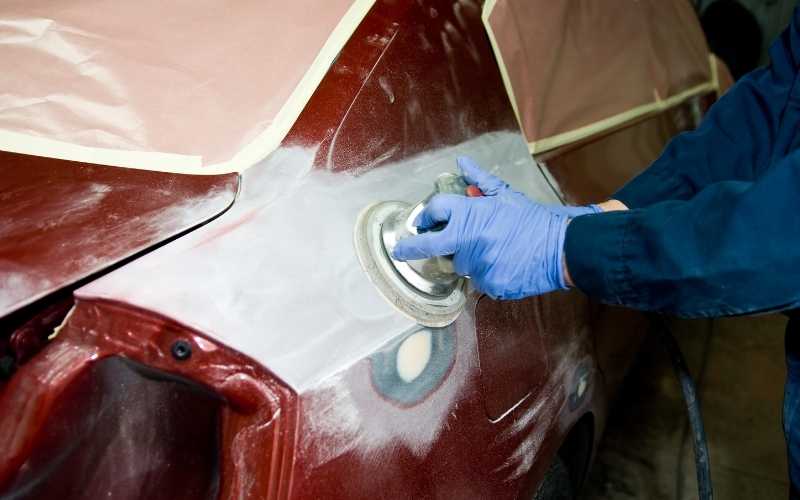Air compressor sizes range from 2 gallons to more than 80 gallons. The larger the tank, the greater the capacity of the pump, so it can fill up the tank and recover quickly when the air runs low.
Since there are different sizes, the question everybody asks themselves at first is, which air compressor size should I go for?
If you’ve ever considered getting one, I’m sure you’ve asked yourself that question too. You may wonder, should I go for a very big one or a small one?
Answering this question correctly and choosing the correct size can be quite tricky, especially if it’s your first time. But, with the guidelines in this article, we’re sure you’re going to pick the right size for your project.
To choose the correct size for your application, you need to first determine what you want to use it for. The kind of projects you want to carry out with it or the type of tools you want to operate.
When you know this, then you will be able to pick the right size. Air compressors have many applications at home, in the garage/workshop, and on the job site.
You may want to use it to power a paint sprayer to spray cars, houses or furniture, power air tools like nail guns, grinders, air hammers, ratchets, wrenches for working on cars, etc. Or you can use it for inflating stuff like tires, matrasses, and football.
As I said above, you must determine the type of projects or tools you want to power with it. That will tell you the size to go for.
To make it easier, we’ve divided the projects or uses into 5 broad categories and have recommended air compressor sizes for each of these 5 categories.
Table of Contents
Category 1: Air Compressor Size For Inflating projects

The first category of users are those who want to use it for inflation projects. If you want to inflate your car tires, your kid’s football, rafts, and matrasses, then you fall into this category of users.
Most likely, you don’t need an air compressor for this since you are not really powering any air tool. What you need is an inflator, which is likely cheaper.
An air compressor’s sole purpose is to store air in a storage vessel like a tank as a form of energy to power air tools.
If you want to inflate a football or air mattress at home, you don’t need compressed air energy to do this. You need a device that can provide a steady stream of air, which is an inflator.
So, consider buying a good portable inflator if you only intend to inflate things at home.
On the other hand, if you really dig getting an air compressor for this, then you can go for a small 6-gallon pancake or hotdog type. That will be sufficient.
If you intend to power air tools in the future, it may also be handy.
Category 2: For Small Fastening Projects

Some other users engage or may want to engage in small projects like installing trim moldings in a room or framing a single room or so.
If you want to operate a trim nailer to install crown or base moldings, or if you want to power a pneumatic framing nailer to frame a single room, build a small deck or build a fence around your home, then you need a small inflation and fastening compressor.
You don’t need a very big size air compressor for these projects. One with a small 6 or 8-gallon tank will surely get the job done.
Trim and framing nailers don’t really require a constant flow of compressed air to operate. They only require air intermittently, so they don’t consume a large volume of air at once.
So consider getting one with a 6-gallon-sized tank like the Bostitch BTFP02012, the Dewalt DWFP55126, or even the super quiet 8-gallon California air 8010. They’d fit in perfectly.
Remember, this is for installing trim moldings in one or two rooms or framing one room. You’ll need one with a more sizeable tank if you intend to tackle larger projects like framing a whole building or installing trim moldings in an entire building.
Related: How To Choose Between Oiled vs Oil-Free Air Compressors
Category 3: Larger Fastening Projects and Simple Auto Maintenance Projects

What if you are not just framing a single room by yourself but working with a team to frame a whole building and connecting several pneumatic nailers to the air compressor? Or what if you’re not just building one piece of furniture, but you are building a whole lot of them?
Then you don’t need a 6-gallon tank size anymore. You need one with a larger storage capacity, preferably 30 gallon, that can power two or more framing nailers or similar tools.
Although the size you choose will largely depend on the type of tools you’ll be using in this instance, you need to check the SCFM requirements of the tools you or your team will be using and then make sure that the air compressor produces more than that SCFM for it to power them effectively.
A 30-gallon unit is also ideal for small or simple auto maintenance projects in your workshop.
You’re doing nothing complicated here, just simple auto maintenance projects, or if you want to make simple repairs to your lawn equipment like sharpening lawn mower blades with a grinder.
Related: 7 Best Air Needle Scalers for Metal Surface Preparation
Category 4: For Auto Body Shop, Workshop, or Garage Use

If you want to get serious in your workshop with some pretty serious auto maintenance or body shop projects, especially if you will be having a buddy working with you, and both of you will be using tools like pneumatic sanders, die grinders and cut-off tools which usually consume a lot of air, then you DON’T need a portable compressor.
What you need in this instance is a big stationary compressor that needs to be bolted on the ground, preferably a 60-gallon or larger, to power these tools.
If you’re going to be running these kind of tools and projects, it is usually recommended that you go for as large an air compressor size as you can afford because these tools use up a large volume of air. Their CFM requirements are high.
That means if you don’t have a large enough tank and a suitable pump to match, your tools will be using up the air quickly, and you’ll have to wait continuously for the pump to recover and fill the tank.
To make things easy for you, always check the CFM or SCFM requirements of the pneumatic tools you’re going to be running, and then make sure the air compressor is rated to produce at least 20 percent more than that. If not, it won’t be able to keep up with your tools.
Category 5: For Spray Painting Projects

With a paint sprayer lying around and a suitable air compressor to match, your spray painting projects will just become more fun.
The issue, however, is choosing one with the right tank size that can keep up with the paint sprayer throughout the project.
When it comes to spray painting projects, the least tank size you should go for is 30 gallon.
One with a 30-gallon tank will be suitable if you tackle small projects like spray painting furniture. If you are in a car body shop environment, you can use it to spray paint one car panel, and then you have to wait for the tank to recover before you continue.
You can’t spray paint multiple car panels with one charge if your tank is 30 gallon.
If you intend to tackle larger projects like spray painting multiple car panels in one charge of the tank, then you have to get one with a 60-gallon tank or a larger 80-gallon.
If you are spray-painting an entire car, then you should consider an 80-gallon air compressor. As I’ve stated before, the larger the project you intend to cover, the larger the size you should go for.
Also, take note of the SCFM requirements of the tools you’ll be using and make sure the one you choose produces more than that in order to power the tools conveniently.
Ask yourself, will I be using the air compressor by myself, or will someone be using it at the same time as me?
If more than one person is going to be using it at the same time, then you must add up the SCFM requirements of the tools you’ll be using and make sure that the air compressor produces 20 to 30 percent more than the total SCFM of both tools.
Then you can use it with peace of mind, knowing that it can keep up with the air demands of the tools you’re running with it.


Very informative.
Thanks very much……….you made it so convenient to select. Thanks
I’m glad you found it helpful.